The Colt Model 1895 was John Browning’s first foray into machine gun design, and based largely on his previous work with lever action rifles. The gun used a rather unique design, having a gas piston which swung in an arc from a gas port placed near the muzzle rather than reciprocating. The movement of the swinging arm was translated into forward and backward motion of the bolt through a cam, and a rotating cog wheel was used to feed cartridges from a belt. There’s no reason such a design couldn’t work, though the clearance required for the arm resulted in both the gun’s nickname and the absence of any other notable guns copying the idea.
The 1895 was initially adopted by the US Navy in 6mm Lee caliber, but the guns were made until the end of WWI in a variety of other rounds, including .30-40 Krag, .30-06, 7mm Mauser, and .303 British. During the War Colt ceased production and sold the rights and tooling to Marlin, who continued to produce them (most of the photos we have are actually of a Marlin 1917 version of the gun).
The gun was moderately successful, but not outstanding. Compared to its contemporaries (mainly the Maxim and Vickers), its advantages were weight and bulk, as it was fairly slim and air cooled (the action gave it a relatively slow rate of fire, making air cooling more realistic). US use included minor involvements with the escapades in Cuba, the Philippines and China, but not much more. Browning, of course, went on to create much more successful designs with the M2, M1917, and M1919 machine guns.
Photos
Download this gallery in high resolution
Manuals
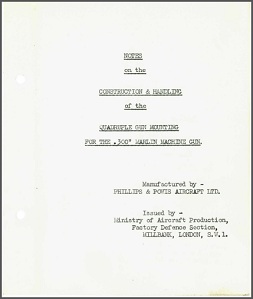

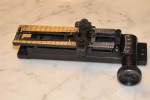

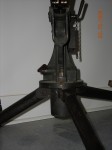
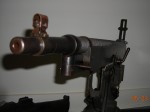
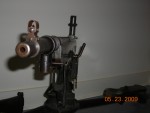
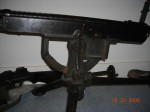
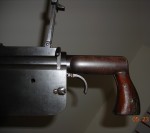
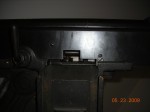
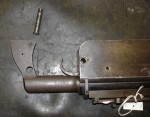


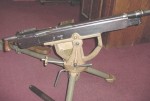
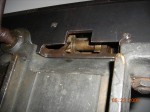
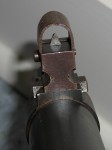

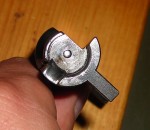


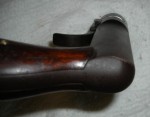




























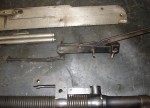















Does anyone know if there are blueprints and/or dimensions on this gun? Trying to build one in 54mm – yes, I am nuts.
The French military purchased over 500 of these guns in 1915. The full story of their limited usage by the French Army remains to be researched. This air-cooled gun functioned very well but had the limitation of firing from a closed bolt. Hence it was prone to “cook-offs” after long periods of continuous fire.
Thanks for the excellent reference materials, now I need to convert this to 54mm for a diorama I’m working on.
Do you need it to be fireable? And is the cartridge rimmed? Bottlenecked?
Did you ever succeed in building the 1/32nd (?) scale version of the Colt MG?
All the best,
Dan
These were used to shoot up striking coal miners in the hills of the Eastern US.
I just came across 4 colt working models, one of the 1895 potato digger, one of Baby Browning machine gun, one of automatic colt model 1914 cannon, and colt machine gun. We also found 3 Colt model 1919 patent booklets with the original patterns. There is also one other booklet with patterns on one of the other guns in this lot. These models were made by George J. Braun who worked for Colt.They are around 12″ long and 5″ tall. They are made exactly like the real guns. Great detail and craftsmanship. They are in super condition. Has any one ever seen these before. Thanks Bill Spicer
Does anybody know where i may purchase or exact dimensions and materials list so i can have a cloth belt for a 30-40 krag m1895.
I have always read these were not that great, but wondered why. Seems lighter and simpler compared to water cooled guns of its time. Why was this gun considered not up to snuff? Never heard any complaints about jamming or not firing when needed.
I just read that the potato digger was mused by the polish army in the war against the sowiet union.
I just read that the potato digger was used by the polish army in the war against the sowiet union.
There were two models of the Digger
1. M1895 with fixed barrel
2. M1914 with a changable barrel
“The gun was originally chambered in 6mm Lee Navy and later, after the adoption of the Krag–Jørgensen rifle, in .30-40 Krag, 7×57mm Mauser caliber (the same cartridge used in the Spanish Model 1893 Mauser), and .30-06 Springfield in 1914. The 1914 version also included a lower tripod for firing prone; this is likely what led to the gun’s nickname of “potato digger”, as the operating lever would dig into the ground if it were fired from too low a position.[9]
The M1895 was made for export as well; the Russians ordered several thousand M1895 machine guns in 1914 in 7.62×54mmR caliber for use in World War I. In .303 British caliber, the M1895/14 saw service in England and France. The M1895 was also sold in 7×57mm Mauser caliber for use by various countries in South America”
“The M1895/14 Colt–Browning saw use in France by some Canadian infantry formations. Deploying to France in 1915, the 21st Canadian Light Infantry Battalion used .303-caliber M1895/14 machine guns in combat”
The Digger was originally the standard Canadian gun and there were those who thought its air co0led design was a advantage in the trenches
“These guns saw significant combat but were soon replaced by Vickers machine guns. They were not taken out of combat however, but were instead given to equip formations of the Belgian Exile Army. The French also tested the Colt and some were used in early aircraft for testing. Additional Colt guns were sent to the Russians, who used them extensively.
While the United States used the M1895 for training, it was considered obsolete by the time the United States entered the war, and saw no service. Colt ceased production of the M1895 and variants in 1916, selling the machinery and rights to manufacture to Marlin Rockwell, who took over the still active Russian military and Italian Navy contracts, in order to concentrate on increased Vickers production.”
Despite this statement, see this WW2 photo of a USCG port security patrol with Diggers on what look to be field expedient mounts on their quarter tons,
https://militarymashup.com/mmu_get_jpeg.php?17640d1965c27cf0de46134e8c596f9a2
,